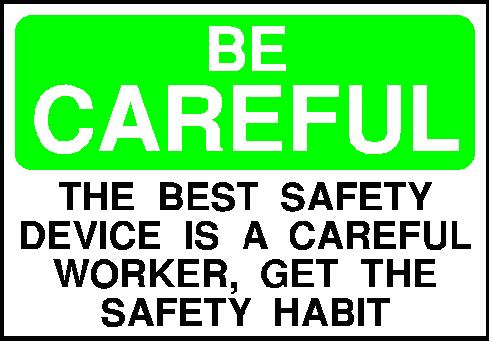Team:IIT Madras/Safety
From 2011.igem.org
| Line 41: | Line 41: | ||
.justifyalign {text-align:justify} | .justifyalign {text-align:justify} | ||
--> | --> | ||
| + | #menu ul{list-style:none;} | ||
| + | #menu ul li{float:left; width:75px; text-align:center; background:url('https://static.igem.org/mediawiki/2011/1/1c/Test_menu.gif') repeat-x;margin:10px; height:34px; -moz-border-radius:5px; border-radius:5px; -webkit-border-radius:5px;} | ||
| + | #menu a {position : relative; top:7px; text-decoration:none; color:white;} | ||
| + | </style> | ||
| + | |||
| + | |||
</STYLE> | </STYLE> | ||
| Line 51: | Line 57: | ||
</body> | </body> | ||
</html> | </html> | ||
| - | + | <div id="menu"> | |
| + | <ul> | ||
| + | <li><a href="https://2011.igem.org/Team:IIT_Madras">Home</a></li> | ||
| + | <li><a href="https://2011.igem.org/Team:IIT_Madras/Team">Team</a></li> | ||
| + | <li><a href="https://2011.igem.org/Team:IIT_Madras/Project">Project</a></li> | ||
| + | <li><a href="https://2011.igem.org/Team:IIT_Madras/Parts">Parts</a></li> | ||
| + | <li><a href="https://2011.igem.org/Team:IIT_Madras/Modeling">Modeling</a></li> | ||
| + | <li><a href="https://2011.igem.org/Team:IIT_Madras/Notebook">Notebook</a></li> | ||
| + | <li><a href="https://2011.igem.org/Team:IIT_Madras/Safety">Safety</a></li> | ||
| + | <li><a href="https://2011.igem.org/Team:IIT_Madras/Attributions">Attributions</a></li> | ||
| + | </ul> | ||
| + | </div> | ||
==Standard Microbiological Practices== | ==Standard Microbiological Practices== | ||
Revision as of 21:29, 2 September 2011
Contents |
Safety
Experiments were conducted in the Undergraduate lab of the Dept. Of Biotechnology at IIT Madras. The lab cohered to the standards for a biosafety 1 lab according to the Centers for Disease Control and Prevention,Atlanta. Biosafety Level 1 is suitable for work involving well-characterized agents not known to consistently cause disease in immunocompetent adult humans, and present minimal potential hazard to laboratory personnel and the environment. BSL-1 laboratories are not necessarily separated from the general traffic patterns in the building. Work is typically conducted on open bench tops using standard microbiological practices. Special containment equipment or facility design is not required, but may be used as determined by appropriate risk assessment. Laboratory personnel must have specific training in the procedures conducted in the laboratory and must be supervised by a scientist with training in microbiology or a related science.
Standard Microbiological Practices
- Statement of Purpose (SOP) have been developed and are kept for easy access which enlists all the safety measures each experiment should be abided for.
- Access to the laboratory is limited or restricted at the discretion of the laboratory director when experiments or work with cultures and specimens are in progress.
- Persons wash their hands after they handle viable materials, after removing gloves, and before leaving the laboratory.
- Eating, drinking, smoking, handling contact lenses, applying cosmetics, and storing food for human use are not permitted in the work areas. Persons who wear contact lenses in laboratories should also wear goggles or a face shield. Food is stored outside the work area in cabinets or refrigerators designated and used for this purpose only.
- Mouth pipetting is prohibited; mechanical pipetting devices are to be used.
- Policies for the safe handling of sharps are instituted.
- All procedures are performed carefully to minimize the creation of splashes or aerosols.
- Work surfaces are decontaminated at least once a day and after any spill of viable material.
- All cultures, stocks, and other regulated wastes are decontaminated before disposal by an approved decontamination method such as autoclaving. Materials to be decontaminated outside of the immediate laboratory are to be placed in a durable, leakproof container and closed for transport from the laboratory. Materials to be decontaminated outside of the immediate laboratory are packaged in accordance with applicable local, state, and federal regulations before removal from the facility.
Safety Equipment (Primary Barriers)
- Special containment devices or equipment such as a biological safety cabinet is generally not required for manipulations of agents assigned to Biosafety Level 1.
- It is recommended that laboratory coats, gowns, or uniforms be worn to prevent contamination or soiling of street clothes.
- Gloves should be worn if the skin on the hands is broken or if a rash is present. Alternatives to powdered latex gloves should be available.
- Protective eyewear should be worn for conduct of procedures in which splashes of microorganisms or other hazardous materials is anticipated.
Laboratory Facilities (Secondary Barriers)
- Laboratory has doors for access control.
- Laboratory contains a sink for hand washing.
- The laboratory is designed so that it can be easily cleaned.
- Bench tops are impervious to water and are resistant to moderate heat and the organic solvents, acids, alkalis, and chemicals used to decontaminate the work surface and equipment.
- Laboratory furniture is capable of supporting anticipated loading and uses. Spaces between benches, cabinets, and equipment are accessible for cleaning.
- Laboratory has no windows that open to the exterior.
- We have an accesible compartment in the lab for MSDS(Materials Safety Data Sheet) where in we have a roster of all the chemicals and what needs to be done in case of accident.
Simple Questions
1. Would any of your project ideas raise safety issues in terms of:
No, the experiments and the constructs generated will not be widely different from those performed by other iGEM teams and molecular biology laboratories. We do not estimate any increased danger to the researcher, public or the environment.
2. Do any of the new BioBrick parts (or devices) that you made this year raise any safety issues? If yes,
- did you document these issues in the Registry?
- how did you manage to handle the safety issue?
- How could other teams learn from your experience?
No. All biobricks made and will be made according to the safety guidelines by Centers for Disease Control and Prevention.
3. Is there a local biosafety group, committee, or review board at your institution?
- If yes, what does your local biosafety group think about your project?
- If no, which specific biosafety rules or guidelines do you have to consider in your country?
Yes, our project has the backing of the dept of biotechnology, IIT Madras. They have been provided us with Biosafety level 1 facilities for all our experimental work.
4. Do you have any other ideas how to deal with safety issues that could be useful for future iGEM competitions? How could parts, devices and systems be made even safer through biosafety engineering?
As all of the teams are essentially undergraduate efforts, we are to a large extent unfamiliar with the consequences of most safety protocols. So we recommend to have the Biosafety Measures made as part of iGEM Biosafety Journal to which all the teams can cohere to.
 "
"



